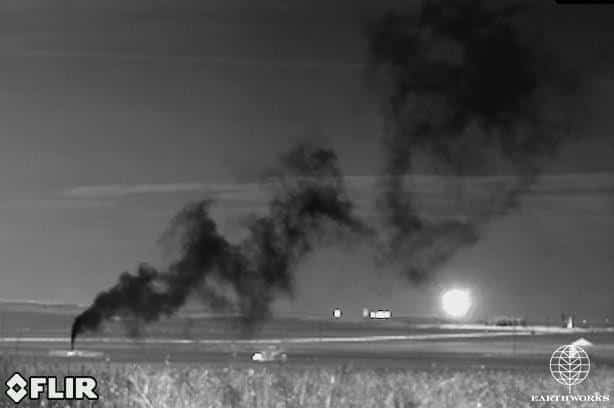
EU’s methane strategy hinged on massive deployment of on-farm biogas
The European Commission has released its Methane Strategy, which enhances and consolidates plans for a more than 400% increase in biogas production to reduce methane emissions across the continent.
It repeatedly calls for biogas production to be incentivised, to rise from around 17Mtoe (million tonnes of oil equivalent) to up to 72 Mtoe by 2050.
Tackling methane emissions is seen as critical to achieving the EU’s 2030 climate targets and its 2050 climate neutrality goal, as well as contributing to the Commission’s zero-pollution ambition. It confirms what the World Biogas Association has long maintained, “There’s no net zero without biogas”.
A blueprint for global action
Methane is the second biggest contributor to climate change, after carbon dioxide. It is also a potent local air pollutant causing serious health problems. In global warming potential terms the release of one tonne of methane is the equivalent of 28-36 tonnes of CO2 over 100 years, around 82 times over a 20-year period.
The EU produces 5% of global methane emissions directly but as the world’s largest importer of gas it plays a major role in influencing the climate policies of other countries, the strategy notes. The EU imports around 47% of internationally traded gas hence the Commission hopes its strategy will spark international collaboration on the setting of standards and benchmarks to address the issue nationally and globally.
The International Energy Agency (IEA) Methane Tracker says 570 million tonnes of methane are emitted annually. This includes emissions from natural sources (around 40% of emissions), and those originating from human activity (the remaining 60% – known as anthropogenic emissions).
It says the energy sector globally is responsible for 82Mt. Both the EU and IEA are calling on the energy sector to retool and refuel with green gases and is using satellite and drone technology to identify the sources of emissions.

The strategy proposes, “To reduce methane emissions in the energy sector, an obligation to improve detection and repair of leaks in gas infrastructure will be proposed and legislation to prohibit routine flaring and venting practices will be considered. The Commission will engage in a dialogue with its international partners and explore possible standards, targets or incentives for energy imports to the EU, and the tools for enforcing them.”
The focus of attention is, however, on agriculture, which is by far the largest cause of methane emissions. The EU calculates it is responsible for 53% of total emissions, with the waste sector accounting for 26% and energy 19%.
The environmental services of on-farm AD must be incentivised
The strategy advocates the very real and positive impacts biogas production represents as a cost-effective way to address methane emissions. We unashamedly quote it at length as it makes an irrefutable case for global investment in biogas production.
The strategy says, “Non-recyclable human and agricultural waste (i.e. manure) and residue streams can be utilised in anaerobic digesters to produce biogas or in biorefineries to produce bio-materials and intermediate bio-chemicals. The biogas resulting from such feedstocks is a source of highly sustainable and useful renewable energy with multiple applications, while the material that remains after anaerobic digestion (digestate) can, after further processing, be used as a soil improver.
“This in turn reduces the requirement for alternative soil improving products, such as synthetic fertilisers of fossil origin. Moreover, in line with the waste hierarchy, the waste-based biodegradable input into biorefineries and biogas plants can count towards municipal waste recycling targets as set out in Directive 2018/98/EC. The role of sustainable biogas production in contributing to the EU’s decarbonisation objectives has been recognised in the recently published EU strategies for energy-system integration and hydrogen.
“According to the EU’s long-term decarbonisation strategy, by 2050, the EU’s annual consumption of biogases (biogas and biomethane) is projected to grow to between 54 and 72 Mtoe, from around 17 Mtoe in 2017. This growth in production will contribute towards the EU’s renewable energy and climate targets modelled in the long-term strategy. Biogas from agricultural waste or residues can also cost-effectively mitigate methane emissions in the agriculture and the waste sectors.
“The collection and use of high methane emitting organic wastes or residues from farming as biogas substrates should be further incentivised. This can be achieved, for example, through identifying best practices for collection and/or harvesting of sustainable wastes and residues or by incentivising the use of digestate as a sustainable soil improver in lieu of mined fertilisers. Sequential cropping can also be used in combination with manure as feedstock for sustainable biogas production, while contributing to sustainable farming practices, and as such could also be further incentivised.”
The Commission strategy calls for improved reporting of emissions from agriculture through better data collection, and the promotion of opportunities to reduce emissions with support from the Common Agricultural Policy.
An end to waste
In the waste sector, the Commission will consider further action to improve the management of landfill gas, harnessing its potential for energy use while reducing emissions, and will review the relevant legislation on landfill in 2024. Minimising the disposal of biodegradable waste in landfills is crucial to avoid methane formation. The Commission will also consider proposing further research on waste to biomethane technologies.
Frans Timmermans, Executive Vice-President for the Green Deal, said at the launch of the strategy (October 23), “To become the first climate-neutral continent, the European Union will have to cut all greenhouse gases. Methane is the second most powerful greenhouse gas and an important cause of air pollution. Our methane strategy ensures emissions cuts in all sectors, especially agriculture, energy, and waste. It also creates opportunities for rural areas to produce biogas from waste. The European Union’s satellite technology will enable us to closely monitor emissions and help raise international standards.”
The strategy concludes with the Commission inviting the European Parliament, Council, Committee of the Regions, European Economic and Social Committee, Member States, non-EU countries, international organisations and stakeholders at EU and international level to support and cooperate on the further development of this strategy to urgently address methane emissions across the energy, agriculture and waste management sectors.
Main picture: Methane emissions from an oil and gas site show up as a plume in this photo taken with an FLIR Optical Gas Imaging camera (Earthworks)

